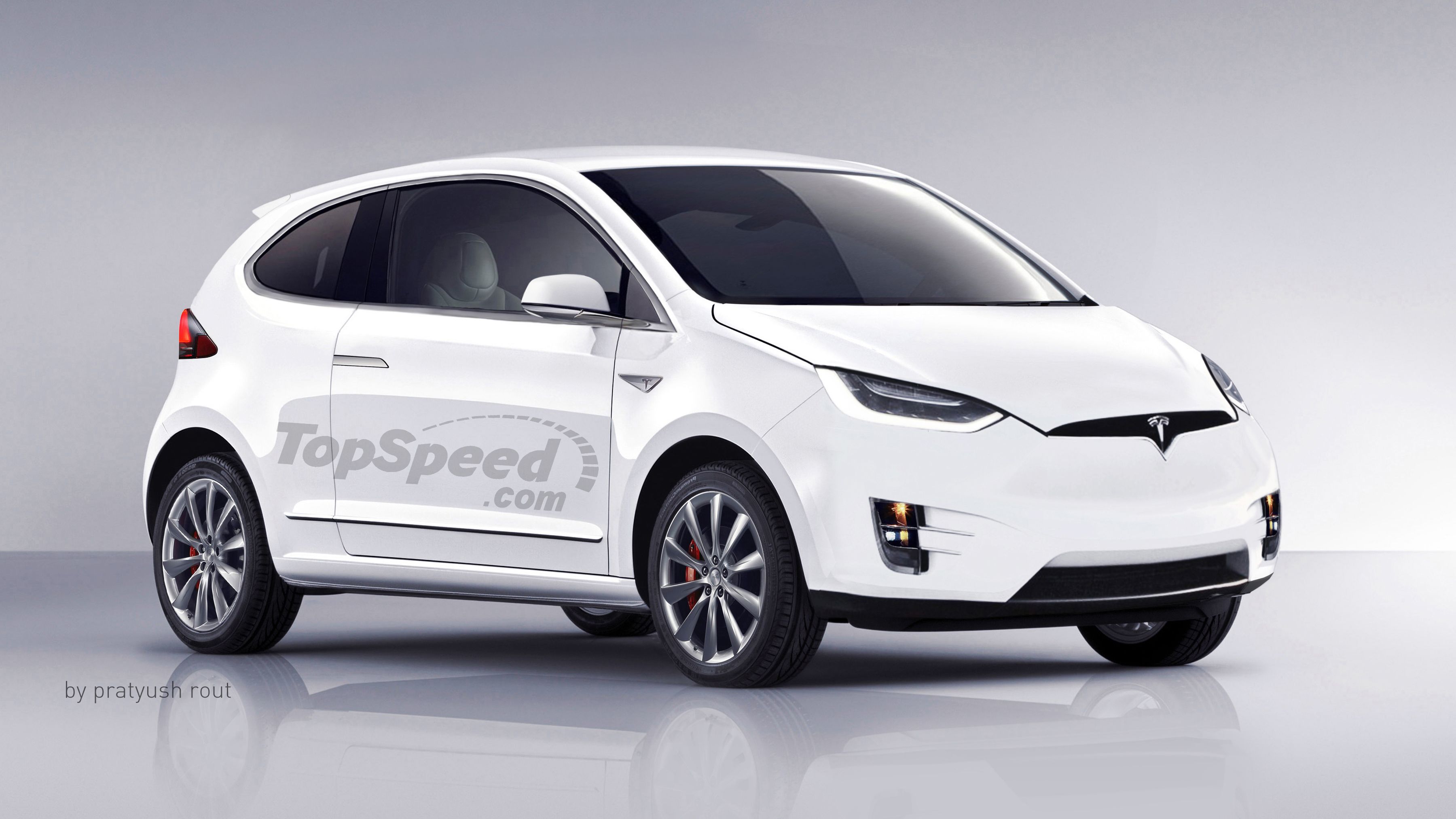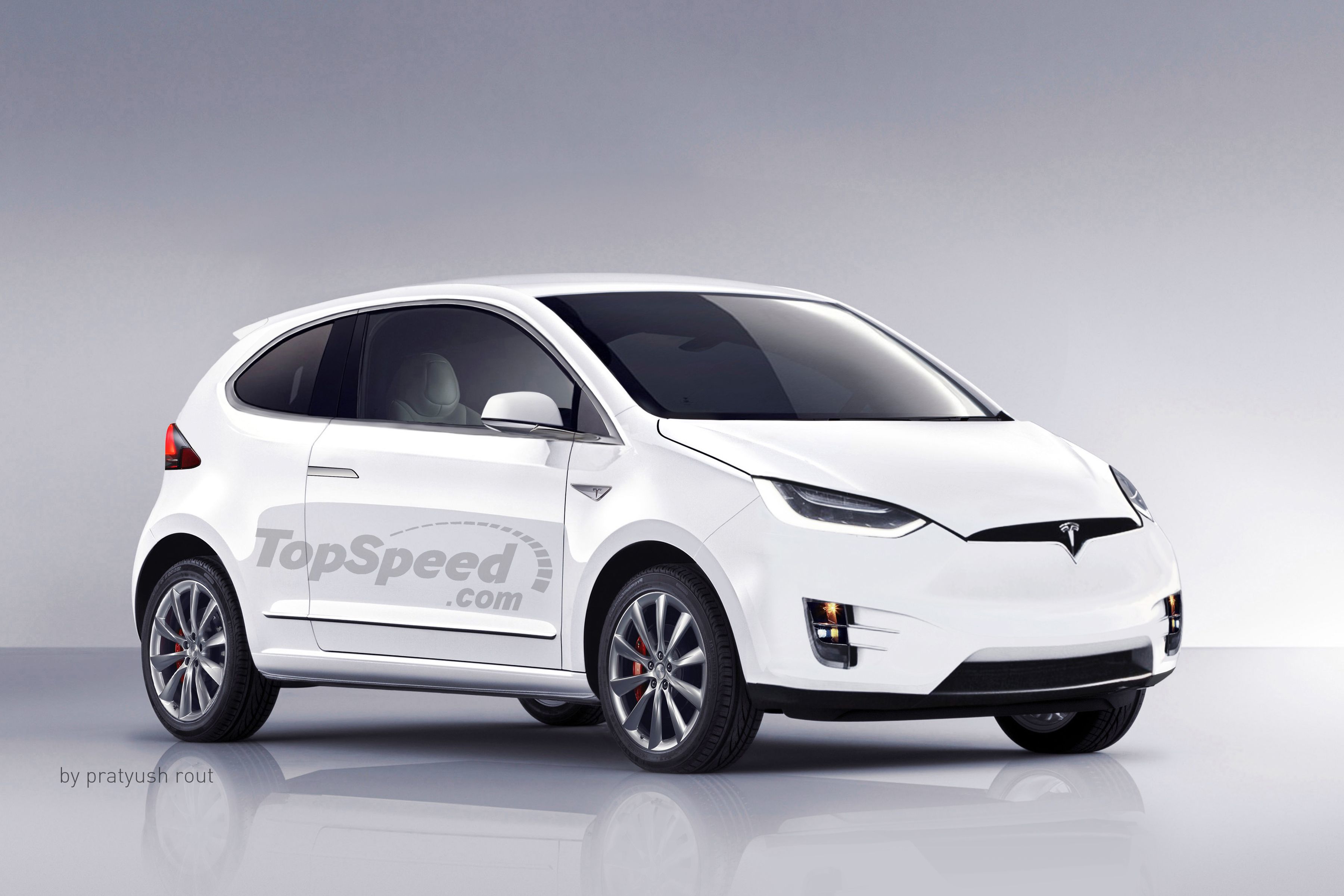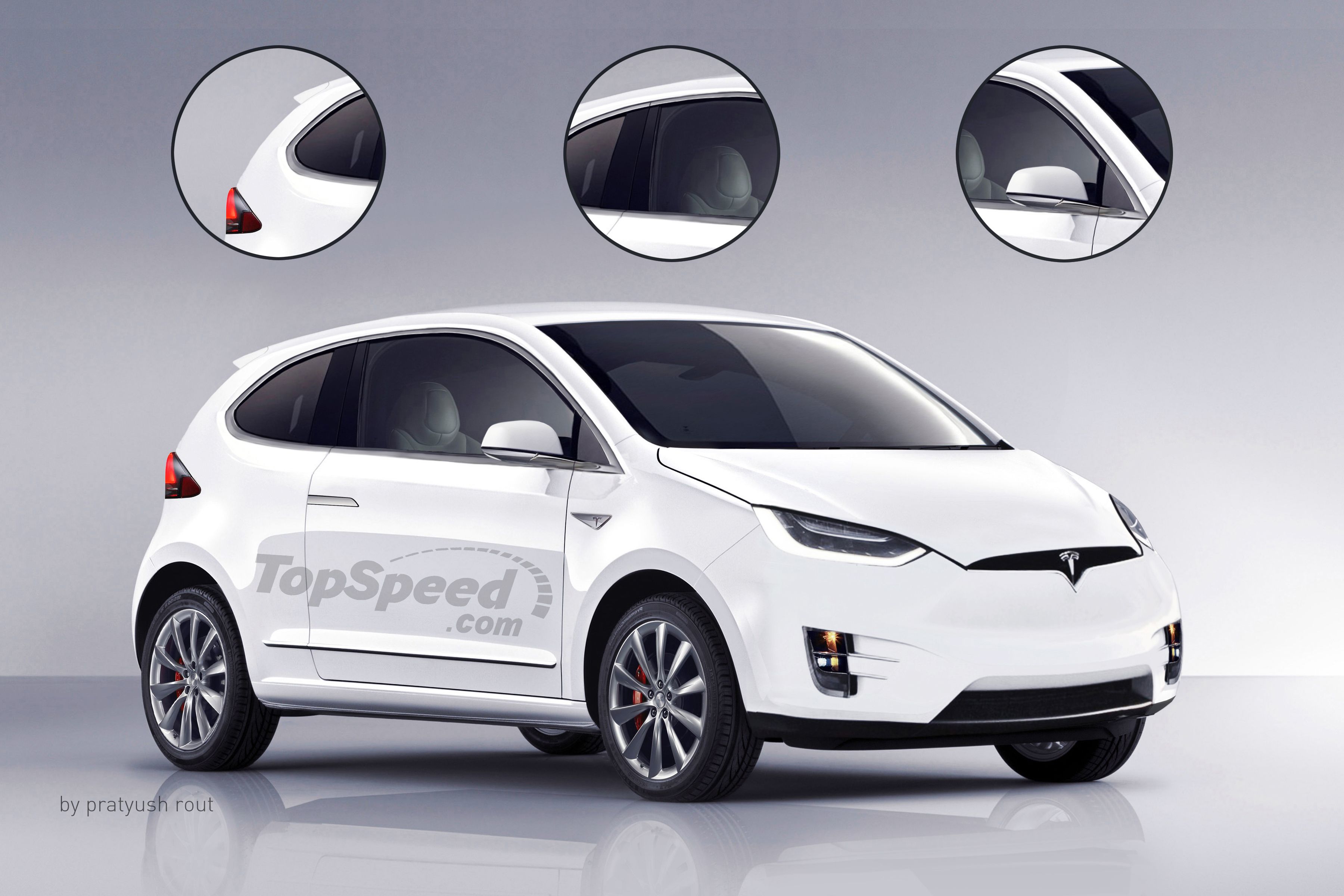Before you start blasting away in the comments section, hear me out, because a Tesla City Car isn’t as crazy as you might think. There’s a reason the California-based automaker started with the ultra-pricey Roadster, Model S, and Model X – the plan is to use the profits from those high-end autos to fund more accessible offerings (you know, like the Model 3). And considering Tesla has stated time and again that its ultimate goal is to bring electric transportation to everyone, the only logical thing to do is to spray a bit of the Musk on a city car, the affordable option when it comes to personal urban transport.
So far, Tesla’s top-down strategy has worked wonders, and depending on how the company handles production of the Model 3, more products are almost certainly just over the horizon. What’s more, a Tesla city car would be the perfect solution for urban dwellers looking for a four-wheeled addition to their laptop-and-coffee-shop lifestyle.
So we drew up a rendering, imagined we were in Palo Alto, and came up with the following speculative review.
Continue reading to learn more about the future Tesla City Car.
2020 Tesla City Car
- Make: Array
- Model: 2020 Tesla City Car
- [do not use] Vehicle Model: Array
Exterior
If I were a betting man, I’d say the number one most controversial thing our readers will point out about this car is the way it looks. And that’s justified – it’s certainly usual for a Tesla. It’s not low-slung and streamlined like the Model S and 3, nor is it big and bold like the Model X. The trademark Tesla fascia is found up front, including the grille-less design, narrow headlights, and angular corner lamps, but the rest of it looks like… well, a normal EV.
And that’s weird for a company hell-bent on being different. But the thing about a city car is its no-frills approach to motoring – you get the basics, not much else. That means the design can’t come with wild Falcon doors or a sexy rear end. It’s still very much a form-follows-function kind of automobile, and practicality remains a priority.
That said, the Tesla City Car is certainly not boring, especially when you place it alongside other entries in the segment. For starters, the previously mentioned Tesla front end adds a good deal of spice, especially with the LED-equipped daytime running lights in the headlamps. The compressor blade-style wheels are also a nice addition, looking good despite their slimmer fit. The roofline is nicely angled, but don’t look for any ginormous panoramic glass here, as that’s a feature reserved for the more expensive Tesla products.
The profile uses the usual triangular fender badges and recessed door handles, while in back we find wraparound taillights similar to the Model S and X. The B pillar is finished in black, enhancing the rake of the shoulder line, and there’s a subtle roof spoiler hanging out in the rear to aid airflow.
Thanks to the shape, I’d expect the Tesla City Car to be incredibly aerodynamic, a big plus when rationing electrons for maximum range.
I’d also expect Tesla to offer the vehicle with a multitude of customization options, from new wheels, to unique paint colors, to new bumpers. After all – if the model is successful, buyers will wanna stand out from the pack, no?
All told, the Tesla City Car might not be the sexiest thing to wear the T, but it’s still most definitely a Tesla.
Interior
Note: Tesla Model S pictured here.
This is a little tougher to discern, especially since we have yet to see the final production version of the Model 3’s cabin. But given what we’ve seen so far, there are a few assumptions we can make.
First up, there should be a very simple, uncluttered design, something substantially less busy than the Model S or X. Both these products get spacey layouts with angles, cuts, and dives that look like they were plucked from the cockpit of an intergalactic shuttle from a sci-fi movie. Don’t get me wrong, I think they look fantastic, but such frivolities will probably be too expensive for the more accessible City Car. Instead, look for something clean and simple, with broad, solid-color panels and lots of straight lines – kind of like what was seen during the Model 3 debut.
Stuck to the dash will be that old Tesla trademark – the enormous touch screen panel. Even with a budget-minded approach, I can’t see any Tesla ever getting the usual spread of buttons and knobs, so this thing is a must.
The upholstery used will be high-grade fabric and microfiber, covering everything from the dash, to the door panels, to the steering wheel. I also anticipate a multiplicity of customization options offered, just like the exterior.
One of the City Car’s strongest selling points will be the huge amount of space it offers. While only equipped with seating for the driver and a single passenger, there will be tons of room in the rear cargo area and the frunk (in case you were wondering, “frunk” is Teslanese for the front trunk, or rather, the open space in the nose made available thanks to no internal combustion engine). Tesla will paint the City Car as a practical solution for hauling home those garage sale treasures you dug up over the weekend.
Then, of course, there’s the technology. Even at this price point, expect Bluetooth, navigation, wireless streaming, and lots of other goodies. The pricier tech, like the Autopilot feature, will most likely be offered free-of-charge for a limited time, and once you’re used to it, Tesla will ask for additional funds to keep it active. Bio-Weapon Defense Mode will be an available option.
Drivetrain
Note: Tesla Model S pictured here.
Like any all-electric car, the most interesting bits are what make it move.
Similar to the rest of the Tesla range, the City Car might come in a variety of different power specifications. The current Model S line starts with the 60-kWh option, which would be a bit much for the City Car, so I think a 40-kWh option would be a better fit. I’d anticipate 200 miles of range per charge with that one.
More range might be offered with a 60-kWh and even 75-kWh option, but if such vehicles are created, they’ll also come with a much higher price tag. As such, I’d only anticipate Tesla making high-end City Cars if it sells enough of the 40-kWh option.
So how about performance? With all the power dumped to the rear axle, the Tesla City Car should manage a sprint to 60 mph in 5.5 seconds. That’s pretty darn quick for an all-electric urban transport, and the insta-torque should be perfect for zipping around town.
As far as a dual-motor AWD powertrain is concerned, I feel like it would be unnecessary. The Tesla City Car isn’t really something you’d want to take into the slick stuff, and like the higher-up 60-kWh and 75-kWh options, I doubt Tesla would make such a thing – unless, of course, the demand is there.
Note: Tesla Model S pictured here.0}
So how much will this thing cost? Considering the $35,000 price tag attached to the Model 3, I could see the Tesla City Car going for $25,000. And that price is before state and federal incentives, which means when it’s all said and done, you’d have a brand new electric conveyance for less thank twenty grand.
Of course, options and more range will significantly pad the bottom line, but still, sounds great, right? Well, in all honesty, it still seems like a bit of a stretch. Tesla still has to deliver on the hundreds of thousand of pre-orders for the Model 3, and although production seems to be ramping up nicely, the proof is in the pudding. 2017 is the target, so we’ll have to wait till then to see what happens.
Should Tesla manage to follow through, then a City Car might emerge as a future possibility. At the very earliest, I’d say we’re still 3 or 4 years away from such a thing, if it even happens at all.
Which, I must reiterate, it might. Because hey – if Tesla is gonna make a semi truck, then a City Car isn’t that far fetched, is it?
Competition
Chevy Spark
GM has been getting heavy into the whole EV game lately, and the Spark looks to be a major player. Offering quirky styling and a tire-squealing 327 pound-feet of torque, the spark can hit 60 mph in just 7.2 seconds. 80 miles are had with each charge. Two trim levels are currently available, with pricing starting at around $26,000 before incentives. Best of all, the Spark isn’t speculative.
Read the full review here.
Volkswagen e-Up
The e-Up debuted as a concept in Germany in 2009, and uses 81 horsepower and 155 pound-feet at the front axle to hit 60 mph in a ploddingly slow 12 seconds. Range tops out at about 100 miles. Deliveries are so far limited to European customers, starting at 27,000 Euros before incentives.
Read the full review here.
BMW i3
Taking cues from the critically acclaimed i8, the i3 applies the same high-end Bavarian gloss to a stubby five-door package. 80 miles are offered with each charge, and there are lots of nice things to say about the interior. It even handles decently, thanks to its (relatively) low center of gravity and rear weight bias. Unfortunately, the Bimmer is still the most expensive of the bunch, starting at $42,400.
Read the full review here.
Conclusion
Whether or not Tesla ends up making a model like the one outlined here, I feel the automaker is working up to something in the same vein as a City Car – high-volume, low cost, practical, and high miles-per-charge. That’s the recipe for electrification for the masses, and a small two-door bubble-mobile could be the final part of the equation. And if Tesla combines the production capabilities required to meet demand for the Model 3 with the drivetrain technology already established by the Model X and Model S, then the automaker could very well see its goals met.





